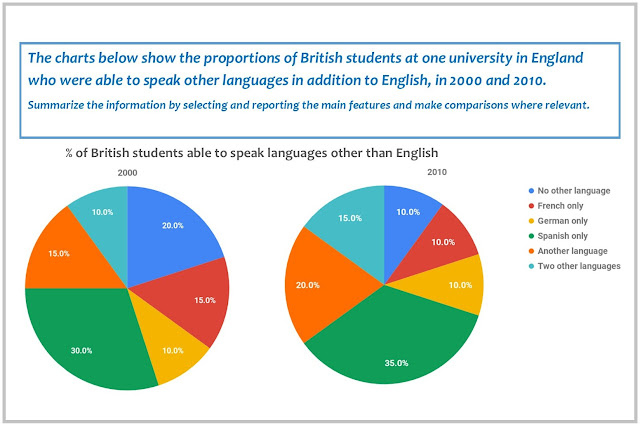Storytelling with IELTS Writing Task 1
Last year I read a book called "Storytelling with data: a data visualization guide for business professionals,” which might seem like a bizarre choice for an English teacher. Seduced by the word storytelling, I ended up reading a book for people whose job is to visualize information in the form of line graphs, bar charts, pie charts, and tables, so basically IELTS Writing Task 1 tasks but for real life situations.
In IELTS preparation we always describe data. But this book gave me an opportunity to change sides and look at those charts from the perspective of those who create them. In this post, I want to share one important insight I got that can make a huge difference to the way you approach IELTS Academic Writing Task 1.
The author of the book emphasizes that to visualize data effectively you need to think about two key questions - who you are describing the data to and what you want them to know or do.
Even though these questions are technically not part of the exam, this kind of thinking can still be useful. In IELTS, of course, exam writers created this graph for you because they want to test your analytical and language skills. But rather than think that, imagine something different. Imagine real people designing the chart in front of you for someone who needs this information in order to make a decision or take action. Imagine those people and those reasons. Imagine a story behind the data.
For example, when I look at the line graph above, I imagine the following story:
In IELTS preparation we always describe data. But this book gave me an opportunity to change sides and look at those charts from the perspective of those who create them. In this post, I want to share one important insight I got that can make a huge difference to the way you approach IELTS Academic Writing Task 1.
The author of the book emphasizes that to visualize data effectively you need to think about two key questions - who you are describing the data to and what you want them to know or do.
Even though these questions are technically not part of the exam, this kind of thinking can still be useful. In IELTS, of course, exam writers created this graph for you because they want to test your analytical and language skills. But rather than think that, imagine something different. Imagine real people designing the chart in front of you for someone who needs this information in order to make a decision or take action. Imagine those people and those reasons. Imagine a story behind the data.
For example, when I look at the line graph above, I imagine the following story:
I am describing this graph to a group of people responsible for buying meat in bulk for a huge supermarket chain. They need my description because they will make decisions about how much meat of each type to buy based on it. I need to tell them the main trends so that they don’t run the supermarket chain into bankruptcy.
How does this unimaginative story affect my description? It makes me choose and describe the data in a way that will help the decision-makers make their decisions. Let’s look at some choices that will or will not help them.
- If I say chicken consumption increased, does that help? No. It raises more questions. Increased how? By two or twenty times? How much more chicken do they need to buy?
- What if I say chicken consumption increased by two times, overtaking beef and lamb which decreased by two times? Does that help? Oh yes. It speaks volumes. It means chicken has become more popular than beef or lamb, so maybe it’s a good idea to buy more of it.
- If I say fish consumption fluctuated, does it help? No. It’s unclear whether to buy more or less of it.
- But what if I say fish consumption fell minimally and remained the least popular type of meat throughout the period? Does that help? Oh yes. It speaks volumes. It means there is no need to buy more of it.
Don’t treat IELTS Academic Writing Task 1 as describing data, treat it as a story. This story that you invent for yourself, however absurd, will help you choose relevant and meaningful information.
Now that you are all set to choose information wisely, check out my step-by-step guide to line graphs that will help you write a description quickly and effortlessly. The guide contains my sample answer for the line graph in this post.





nice
ReplyDelete